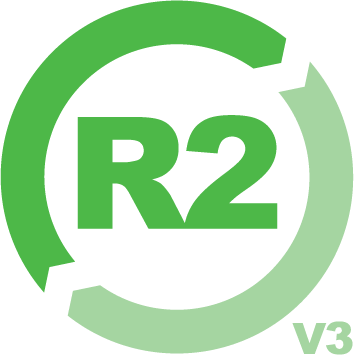Since the beginning of my career in technology, I have greatly appreciated the way that work has allowed IT to become a tangible thing for me. I remember getting my first smartphone in high school and thinking how amazing it was that I was able to pull information from thin air and access it at my fingertips. I can recall in college having a conversation with a friend around cloud storage when it first became a popular concept for our smartphone data. This friend was a nursing major without any type of technical background and when referencing her personal cloud storage plan, she pointed up to the sky. My gaze followed and we laughed as neither of us really knew what (or clearly where) the cloud truly was. And to be fair, if you search ‘cloud computing’ on the internet, you are met with infographics that boast application icons in a bubbly cartoon cloud. You might not know that the cloud is simply a remote data center that allows you to access your data from the internet. At first glance, you may not see that the cloud is one of the single most important technological innovations of our lifetime; an innovation that has transformed global business practices, increased business efficiency, offered faster deployment times, enhanced security features and can be cheaper overall than traditional on-premise infrastructure.
So what is stopping every business from running full speed towards cloud adoption? During my time here at ReluTech, I found this answer can encompass a multitude of reasons depending on the business. Luckily, ReluTech has a solution for just about every single one of these reasons within our Migration Bubble Buster Strategy, or MBBS. More on that soon.
But wait, what in the world is the migration bubble? And why does ReluTech aim to ‘bust’ this bubble? Just like the cloud is not an actual cloud floating in our atmosphere, the migration bubble is not actually a bubble like the ones that form in your bathtub. Rather, it is a bell curve on a graph representing the consolidated cost and time associated with any given organization’s migration projects. The beginning of the curve is a low point on the graph representing the existing on-premise hardware that the customer is currently operating on. It illustrates the somewhat predictable monthly cost of their infrastructure in its current state. The curve starts to rise as cloud projects take form, representing the cost increase taking place during these projects. But wait…did I not just say that cloud is historically cheaper than on-premise infrastructure? I did. And it is. This increase in cost comes from various extraneous (and sometimes unpredictable) factors. For example, while you map over your existing applications, you are still running your legacy data center in parallel until your applications are tested and your projects are complete. You might also be hiring cloud talent (not always cheap) and in some cases, building out entire CCoEs to be able to operate your business once your physical data center is decommissioned. However, the curve does come back down once the organization has fully completed these projects and the final destination of this bell curve is a dot that is hopefully much lower than where the graph started – hence the business case for cloud adoption altogether. The higher the cost of the cloud projects, the taller this bubble stands. Of course, time is linear and the longer these projects take to complete, the bell curve, or ‘bubble,’ will also become wider. The migration bubble can be a beast that rises and expands as you continue to navigate your journey to the cloud. At ReluTech, we make this bubble shorter in stature and skinnier in width. Essentially, we aim to bust this bubble with a unique five-step approach catering to specific business needs – and directly affecting the bottom line.

Sound too good to be true? Surprisingly, it’s not. And even more surprisingly, it is actually quite simple. We begin our approach with the first step – a detailed Discovery of an organization’s hardware assets. We look at every piece of hardware in their data center and then from there, we can determine the fair market value of these assets. Why do we want to know how much your legacy data center is worth? Because we want to buy it from you – our second step, DCEaaS.
DCEaaS is a cumbersome acronym that stands for an even more cumbersome phrase – Data Center Evacuation as a Service. In other words, this is our Purchase/Lease-Back program where we will cut you a check for the value of your data center the same day it is determined. We then lease your assets back to you – and flexibly co-term this lease to match the term of your migration. You will not have to pay for legacy hardware after it has been decommissioned and you will immediately free up a lump sum of capital that can be used to fund new cloud projects, hire consultants, build internal cloud teams, etc.
Step three is Maintenance on this hardware. In fact, this is one of our biggest specialties here at ReluTech as we have been successfully providing third-party maintenance to customers for years – even before we adopted our current company name or began working with our cloud partners. Third-party maintenance is where our customers see the most immediate cost savings. But why would an organization bother to use a third-party maintenance provider? If the hardware provider offers their own maintenance contracts, why would you go through a third party for this service? The answer is guaranteed cost savings for equal support. And, these savings are not marginal. At ReluTech, our customers see anywhere from 40-80% cost savings (on average) on their maintenance contracts in comparison to the maintenance quoted by traditional OEM providers. Their hardware is supported with quality service and equivalent SLAs, except now the company is free from the grasp of their OEM vendors attempting to refresh their hardware and keep them out of the cloud. Our maintenance contracts can be co-termed to the length of your company’s migration, just like our DCEaaS offering, and once again, more capital is now available to repurpose to new or existing cloud projects. Saving money = a shorter migration bubble.
Our fourth step is providing our customers with the specific Talent that they need – whether that be a full-time employee, a contractor, or even a contract-to-hire employee. Our cloud-certified recruiters find top talent across the nation for companies looking to complete specific cloud projects or even adopt a completely different way of running their business, thus expediting the migration process. Expedited processes = a skinnier migration bubble.
We round out our strategy by Disposing of these decommissioned assets, which is the fifth and final step of MBBS. We provide services like asset recovery and disposal, de-install services, DoD wiping and server shredding. Our customers no longer have to worry about what to do with their legacy hardware once it has been decommissioned, and they can focus on the technology that is now running their business – the cloud.
As daunting as the migration bubble may seem, ReluTech has created MBBS to combat most of your anticipated challenges and give you peace of mind around your cloud journey. As the old saying goes, don’t make a mountain out of a molehill. Or rather, don’t make a large migration bubble out of a small migration bubble. This doesn’t quite roll off the tongue, but it still rings true.

ABOUT THE AUTHOR | MARK METZ
Mark is the Founder and CEO of ReluTech. With many years of experience in the technology field, Mark is the leading force of ReluTech’s stride to change the future of the industry. Outside of the office, Mark enjoys swimming, playing ping pong, collecting comic books, and traveling with his family.
Get in touch with Mark: mmetz@relutech.com
